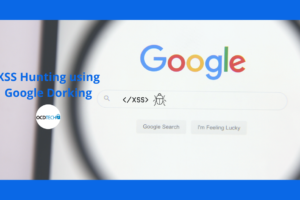Federal agency reveals the first group of winners from its six-year competition.
The U.S. Department of Commerce’s National Institute of Standards and Technology (NIST) has chosen the first group of encryption tools winners that are designed to withstand the assault of a future quantum computer, which could potentially crack the security used to protect privacy in the digital systems we rely on every day — such as online banking and email software. The four selected encryption algorithms will become part of NIST’s post-quantum cryptographic standard, expected to be finalized in about two years.
“Today’s announcement is an important milestone in securing our sensitive data against the possibility of future cyberattacks from quantum computers,” said Secretary of Commerce Gina M. Raimondo. “Thanks to NIST’s expertise and commitment to cutting-edge technology, we are able to take the necessary steps to secure electronic information so U.S. businesses can continue innovating while maintaining the trust and confidence of their customers.”
The announcement follows a six-year effort managed by NIST, which in 2016 called upon the world’s cryptographers to devise and then vet encryption methods that could resist an attack from a future quantum computer that is more powerful than the comparatively limited machines available today. The selection constitutes the beginning of the finale of the agency’s post-quantum cryptography standardization project.
“NIST constantly looks to the future to anticipate the needs of U.S. industry and society as a whole, and when they are built, quantum computers powerful enough to break present-day encryption will pose a serious threat to our information systems,” said Under Secretary of Commerce for Standards and Technology and NIST Director Laurie E. Locascio. “Our post-quantum cryptography program has leveraged the top minds in cryptography — worldwide — to produce this first group of quantum-resistant algorithms that will lead to a standard and significantly increase the security of our digital information.”
The algorithms are designed for two main tasks for which encryption is typically used: general encryption, used to protect information exchanged across a public network; and digital signatures, used for identity authentication. All four of the algorithms were created by experts collaborating from multiple countries and institutions.
General encryption
Used when we access secure websites, NIST has selected the CRYSTALS-Kyber algorithm. Among its advantages are comparatively small encryption keys that two parties can exchange easily, as well as its speed of operation.
Digital signatures
Often used when we need to verify identities during a digital transaction or to sign a document remotely, NIST has selected the three algorithms CRYSTALS-Dilithium, FALCON and SPHINCS+ (read as “Sphincs plus”). Reviewers noted the high efficiency of the first two, and NIST recommends CRYSTALS-Dilithium as the primary algorithm, with FALCON for applications that need smaller signatures than Dilithium can provide. The third, SPHINCS+, is somewhat larger and slower than the other two, but it is valuable as a backup for one chief reason: It is based on a different math approach than all three of NIST’s other selections.
To prepare, users can inventory their systems for applications that use public-key cryptography, which will need to be replaced before cryptographically relevant quantum computers appear. They can also alert their IT departments and vendors about the upcoming change. To get involved in developing guidance for migrating to post-quantum cryptography, see NIST’s National Cybersecurity Center of Excellence project page.
Source: NIST




